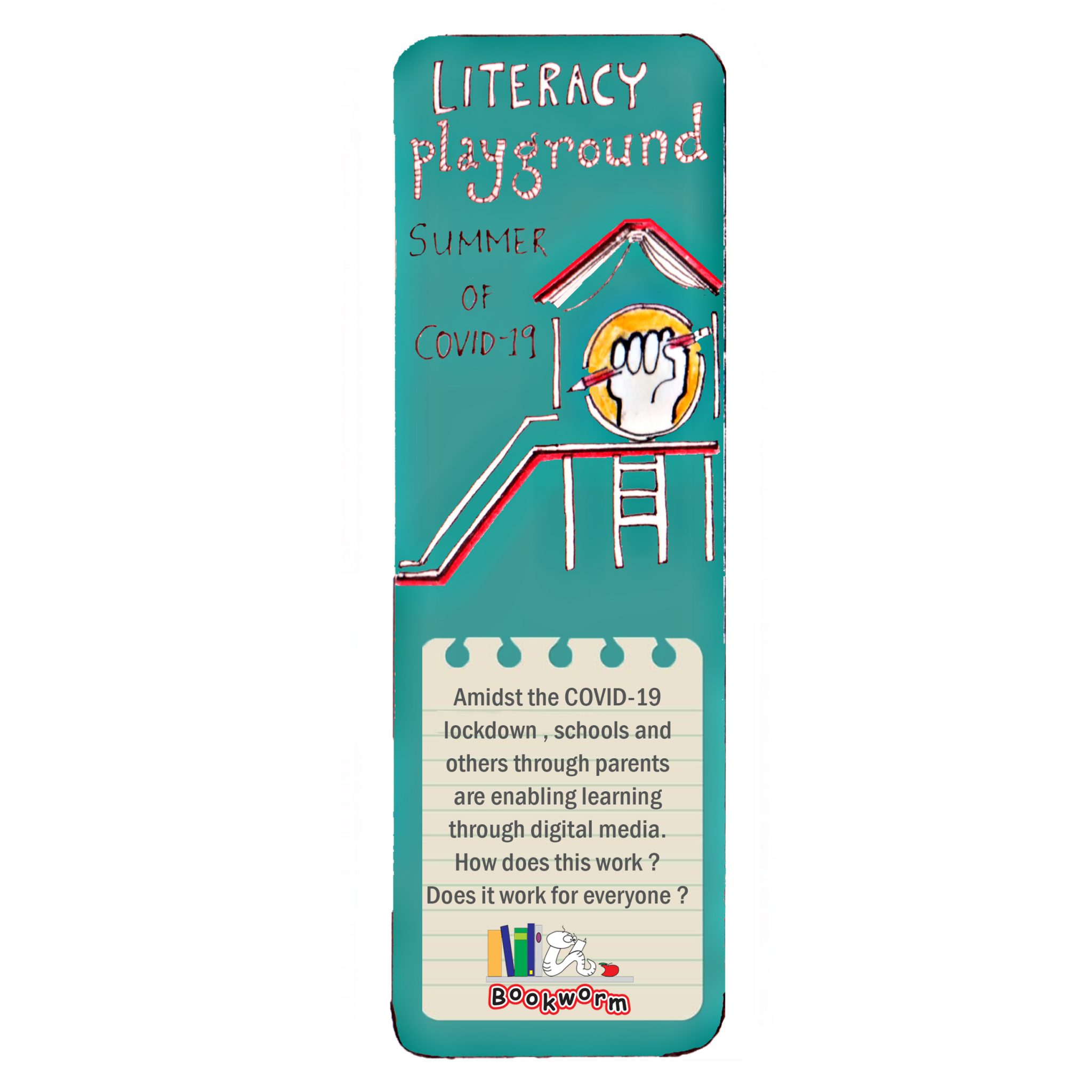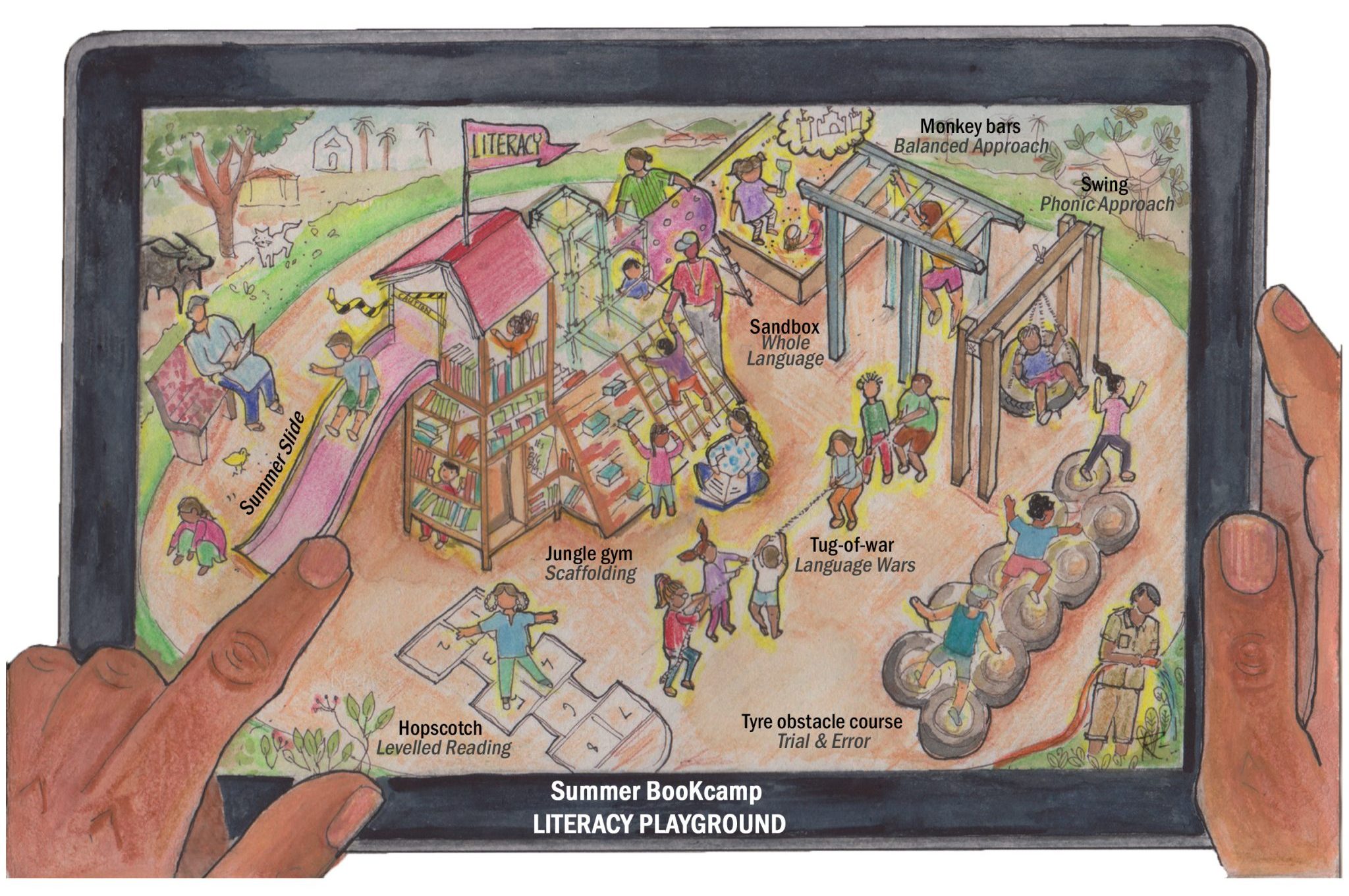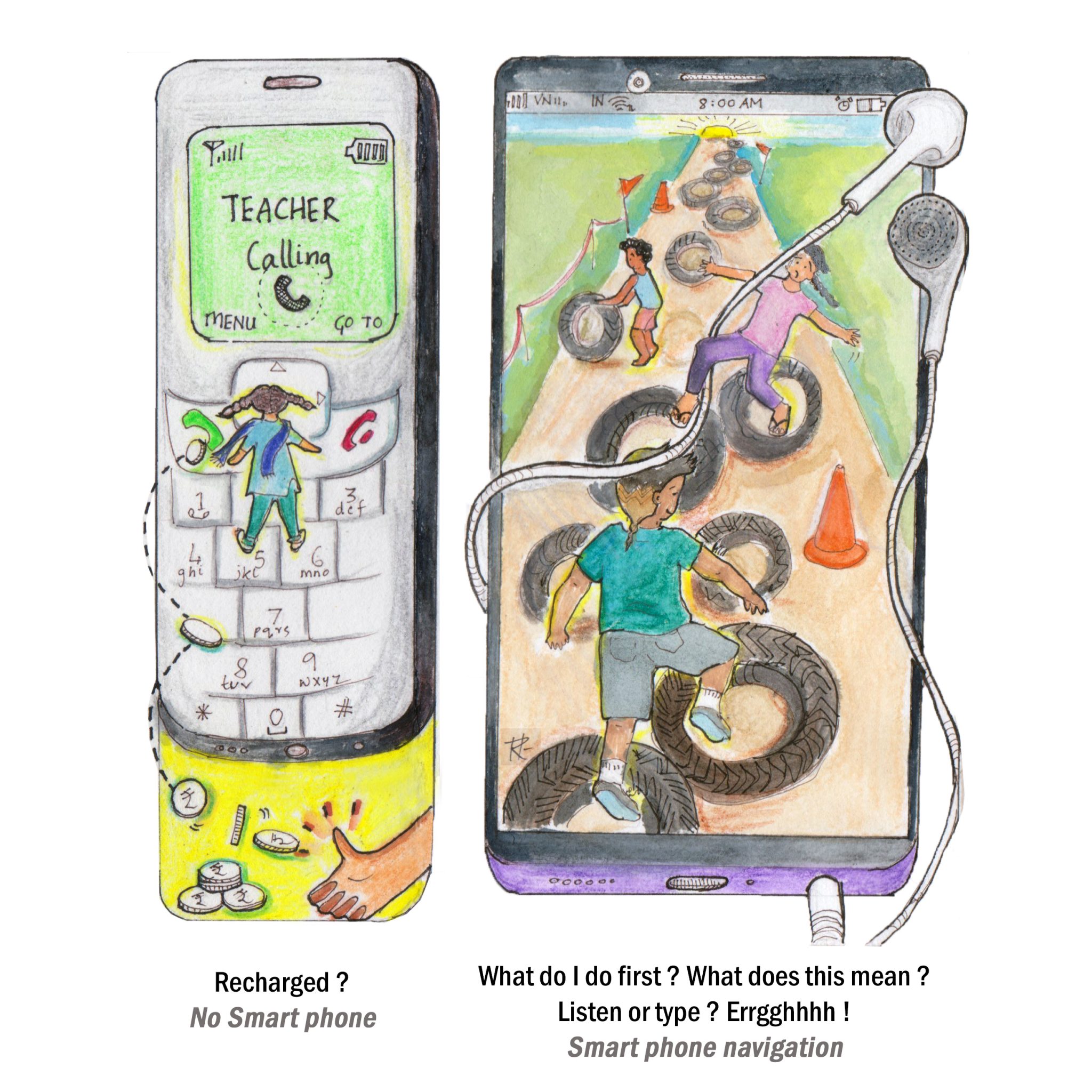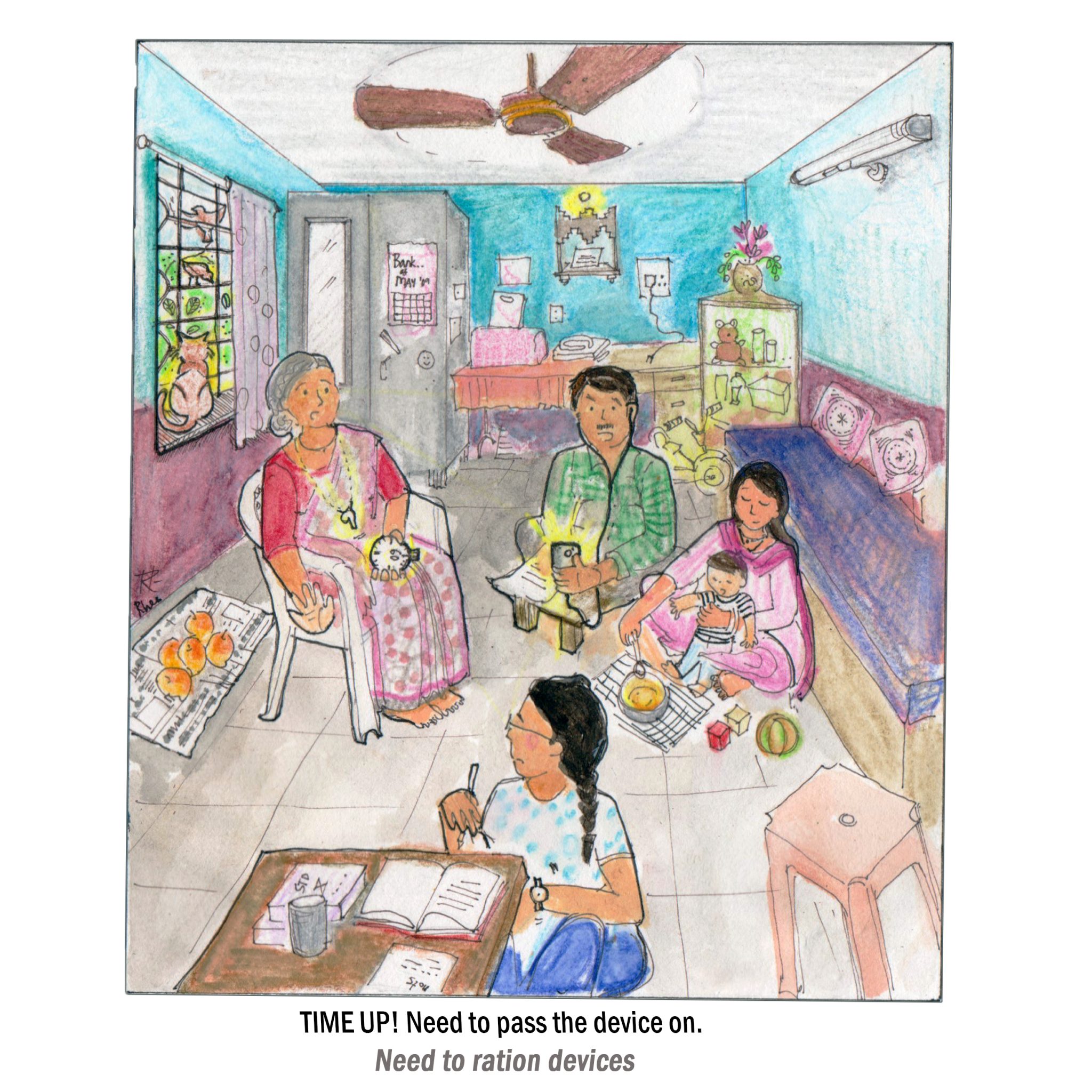
Amidst the COVID-19 lockdown, schools and others, through parents are enabling learning using digital media. How does this work? Does it work for everyone?
In the last few weeks, we have been reflecting on the inequity of the digital divide and sharing an infographic to help us all think together for a way forward.

1) Summer Slide is a decline in reading ability and other academic skills that can occur over the summer months when school isn’t in session.
2) Language wars ( depicted as a Tug-of-war): “whether early instruction should focus letter-to-sound correspondences so that children can learn to sound out words (systematic phonics) or focus on the meanings of written words embedded in stories (whole language)”
3) Monkey bars/A Balanced literacy program strikes a balance between both whole language and phonics. There are five different components of balanced literacy:
- The Read Aloud
- Guided reading
- Shared reading
- Independent reading
- Word study
4) Swings/The phonics approach to reading instruction teaches students the letters of the alphabet and the sounds that each makes. Students use individual letter sounds to form more complex words. Letter recognition is an important first step in reading. Students learn to pair the letter with a unique sound.
5) Sandbox/Whole language is an approach to learning that sees language as a whole entity, and writing, speaking, reading, and listening should be integrated when learned. In the whole language, learning is built upon the real experiences and background knowledge of the learner.
6) Jungle gym/Scaffolding is breaking up the learning into chunks and providing a tool, or structure, with each chunk.
7) Trial & Error Tyre Hurdles: Trial and error is a fundamental method of problem-solving. It is characterized by repeated, varied attempts which are continued until success, or until the practicer stops trying.
8) Levelled reading ( as Hopscotch) is a literacy strategy in which teachers pair children with books that best match their reading abilities. As children’s reading skills improve, teachers assign them more complex books.


We look forward to hearing back from you.
Concept, Design and Illustration by Rhea D’Souza
